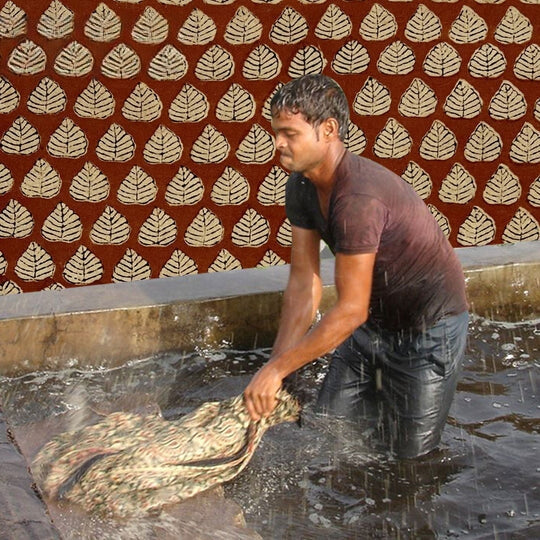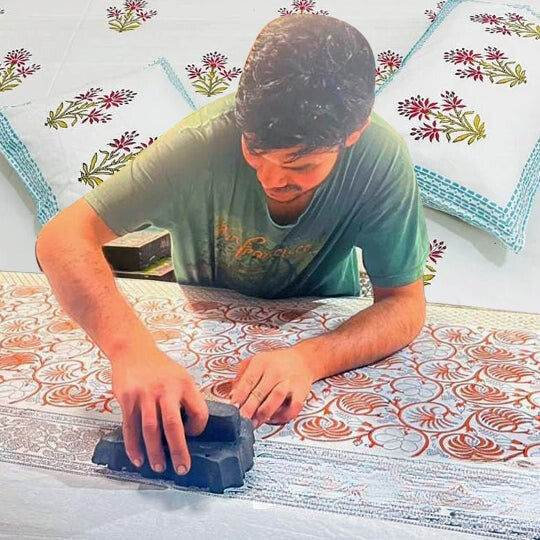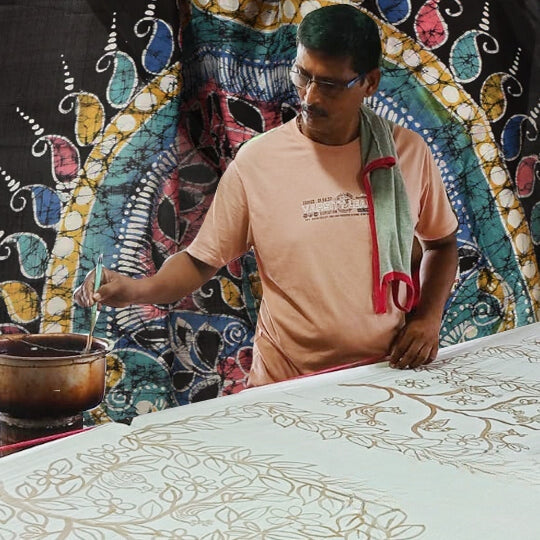INTRODUCTION:
There isn’t anyone who doesn’t like mythology or folk tales. What if there was a way to transport them to your saree? To make joy erupt in our hearts we have Baluchari sarees which contain the same.

Baluchari saree
HISTORY:
Baluchari traces back its origin to West Bengal and dates back to 1740CE when Nawab Murshid, the Mughal governor changed his capital from Dhaka to Murshidabad. Several weavers who made the same journey alongside him settled in a Bhagirathi. a small village called Baluchar on the banks of the river.
TECHNIQUES USED:
To make a Baluchari saree first the Silkworms have been bred specifically for the purpose of producing raw silk ever since it was learned many years ago that the fiber or filament that makes up the silkworm's cocoon can be utilized to create a beautiful and durable fabric. The yarn is boiled in a soda and soap solution to make it soft, and it is then coloured with acid colours in accordance with the specifications of the saree. With both palms exerting some power, the yarn is stretched out in different directions from both sides. The yarn must go through this process to become crisper.
Making the motifs for the "pallu" and other components of Baluchari is a difficult procedure in and of itself. Initially, Jala weaving techniques were used; nowadays jacquard weave techniques are used. Jala weaving is a difficult and fundamental form of weaving. Since each motif is made with the correct count and mathematics, developing motifs on a loom through weaving needs carefully prepared designs on graph paper. On graph paper, the pattern is created, coloured, and then punched out using cards. These cards are punched, sewn in order, and then fixed in the jacquard machine.
TYPES OF BALUCHARI:
- Resham Baluchari : The simplest balucharis which use a single colour of resham thread to weave the entire pattern.
- Meenakari Baluchari: These balucharis have threads in two or more colours and lovely meenakari work that makes the patterns even more vibrant.

Meenakari Baluchari
- Swarnachari (Baluchari in gold): They are the most beautiful baluchari, made of threads that are either gold or silver in colour.

MOTIFS USED:
Baluchari work grew tremendously after the British period, the weavers began to innovate and as a consequence began to incorporate many motifs such as flowers, animals, women riding horses, court scenes and much more. Such work often takes about ten to fifteen weeks of labor to weave. Brighter and bolder colours such as red, green, white, blue and yellow give the Baluchari a festive and ceremonial look.

Motifs such as Women dancing, animals, plants and women riding in a chariot
STRIKING FEATURE :
The main characteristics of the highly ornamental Baluchari saree are the central arrangement of paisley motifs in the pallu with butties in the body portion, the use of extra weft (crosswise yarns) on the pallu, border, and body, and the maintenance of the corner and cross border perfectly in boxes using the jala technique.

Paisley motif in the pallu with butties in the body
CURRENT ADAPTATIONS:
In recent times, colours such as black, brown and maroon are used. Baluchari sarees are known for their pictorial themes showcasing both social life and traditions. Nowadays many designers take up Baluchari as an inspiration to weave some events of people in their saree.

Black colour Baluchari sarees.
REFERENCES:






Leave a comment